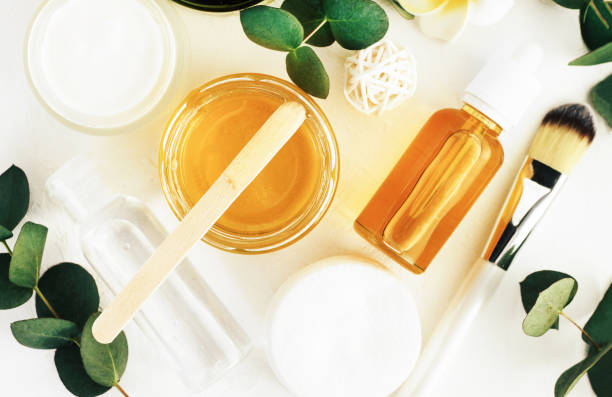The Health Benefits of Honey
Honey is a natural sweetener that offers some health benefits when eaten in moderation. But remember that honey has carbohydrates and can raise blood sugar levels.
Honey contains no fat and provides trace amounts of calcium, iron, zinc, vitamin C and folate. It also contains some bioactive plant compounds, including organic acids and antioxidants.
Antioxidants
Honey is a natural sweetener, but it also has antioxidants that promote health. These molecules neutralize reactive oxygen species (ROS) that build up in cells and cause damage, such as cell death. (2)
The antioxidant properties of honey are attributed to its phenolic compounds and flavonoids. The most common phenolics are caffeic acid and quercetin, which have powerful anti-inflammatory effects and protect against cancer.
In addition to its anti-inflammatory properties, honey has been shown to have broad-spectrum antimicrobial and antidiabetic activity. It has also been shown to inhibit the growth of human cancer cells and induce apoptosis in certain types of tumors.
However, it should be noted that the antimicrobial and antidiabetic properties of honey are limited by its high sugar content. When consumed in large quantities, it can lead to weight gain and metabolic syndrome. It is therefore important to consume honey in moderation.
Antimicrobial
Honey is a natural substance that has been used since ancient times for both nutritional and medicinal purposes. It has been shown to have antibacterial, antifungal, and anti-inflammatory properties. It is also known to prevent infections and speed wound healing. It contains all of the water-soluble vitamins and most of the essential amino acids.
In vitro studies have confirmed the broad-spectrum antimicrobial activity of honey, which is attributed to the low pH and the osmotic effect, high sugar concentration, presence of bacteriostatic factors (e.g. apidaecins) and bactericidal agents (hydrogen peroxide, phenolic compounds, flavonoids, bee peptides), cytokine release, and phagocytosis of the bacteria by NK cells.
The polyphenols found in honey have been shown to quench biological ROS that contribute to neurotoxicity and oxidative stress. They also have anxiolytic, antidepressant, and anticonvulsant effects. Honey has also been reported to inhibit cancer cell proliferation, induce apoptosis, and cause mitochondrial membrane depolarization in melanoma cells, breast cancer cells, endometrial cancer cells, bladder cancer cells, and colorectal cancer cells.
Anti-inflammatory
Honey has antimicrobial and anti-inflammatory properties that can help ward off infections and maintain cardiovascular, metabolic, digestive, and neurological health. It is also a healthy sweetener for diabetics.
Its phenolic compounds have been shown to reduce inflammation and boost immune function by stimulating the activity of leukocytes, natural killer cells, phagocytes, and secretory IgA (which protects the gut). Honey can be used as a treatment for wounds because it stimulates leukocyte activity and promotes cell proliferation. It is the oldest known wound-healing agent and has been found effective for treating acute wounds and mild superficial and partial burns.
Honey is a source of several water-soluble vitamins and minerals, including Vitamin C, calcium, magnesium, manganese, phosphorus, potassium, sodium, sulfur, and zinc. It is also a good source of protein and contains all essential amino acids. Minimally processed honey provides health-promoting phytochemicals, such as flavonoids and phenolic acids. Darker honeys tend to have higher amounts of antioxidants than lighter varieties.
Healing properties
Honey has been used since ancient times for its antimicrobial, anti-inflammatory and wound healing properties. It is also a natural cough suppressant and can help prevent diabetes-related foot ulcers.
The antioxidants in honey reduce oxidative stress, which can damage the body. Choosing a dark, unfiltered variety may offer more health benefits because it usually has higher concentrations of disease-fighting flavonoids, such as pinocembrin and chrysin.
Studies show that honey can kill certain bacteria and fungi and promote the growth of new tissue in a wound. It can also keep a wound dry by absorbing water and removing bacterial residues.
The best type of honey to use is raw, because it has not been heated or pasteurized, which can decrease its nutritional value and natural healing properties. Look for a local beekeeper to find a high-quality source of raw honey that can provide extra beneficial elements like propolis and bee pollen.



